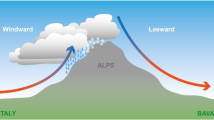Abstract
Background
It is believed commonly that the rate of trauma admissions is affected by weather, particularly temperature.
Objective
We hypothesized that there are significant relationships between temperature and trauma admission rates.
Materials and methods
Trauma admission data (moderate-to-severe injuries as reported to the NY State Department of Health) from a Level I Trauma Center in Queens, NY were linked with archived hourly weather service data for John F. Kennedy International Airport (4.8 miles distant) from the National Oceanic and Atmospheric Administration for the period January 2000–December 2009. The incidence rate ratio (IRR) of trauma admissions was analyzed by Poisson regression as a function of temperature (per 10 °F as well as other weather parameters); night shift, day of week, and month were added to the model as control variables.
Results
There were 9,490 reportable admissions over 87,144 h, (average 0.109 admissions/h). By mechanism, 7,157 (75.4 %) were blunt and 1,967 (20.7 %) were penetrating; the remainder were burns, ingestions, or unknown. By Poisson regression analysis, temperature was significantly associated with trauma admissions [IRR 1.19, 95 % confidence interval (CI) 1.16–1.22], and had a stronger association with penetrating trauma (IRR 1.24, 95 % CI 1.17–1.31). Precipitation, overcast sky, and snow depth were negatively associated with trauma admissions overall, but these did not reach significance for the penetrating subgroup.
Conclusions
Trauma admission rate is significantly associated with temperature. Taking weather forecasts into account may be important for planning of care provision, staffing, and resource allocation in trauma units and emergency departments.



Similar content being viewed by others
References
Friede KA, Osborne MC, Erickson DJ et al (2009) Predicting trauma admissions: the effect of weather, weekday, and other variables. Minn Med 92:47–49
Rising WR, O’Daniel JA, Roberts CS (2006) Correlating weather and trauma admissions at a level I trauma center. J Trauma 60:1096–1100
Bischoff-Ferrari HA, Orav JE, Barrett JA et al (2007) Effect of seasonality and weather on fracture risk in individuals 65 years and older. Osteoporos Int 18:1225–1233
Levy AR, Bensimon DR, Mayo NE et al (1998) Inclement weather and the risk of hip fracture. Epidemiology 9:172–177
Jacobsen SJ, Sargent DJ, Atkinson EJ et al (1999) Contribution of weather to the seasonality of distal forearm fractures: a population-based study in Rochester, Minnesota. Osteoporos Int 9:254–259
Murray IR, Howie CR, Biant LC (2011) Severe weather warnings predict fracture epidemics. Injury 42:687–690
Quetelet MA (1842) A treatise on man and the development of his faculties. William and Robert Chambers, Edinburgh
Oliver J (2005) Encyclopedia of World Climatology. Springer, Dordrecht
Atherton WG, Harper WM, Abrams KR (2005) A year,s trauma admissions and the effect of the weather. Injury 36:40–46
Bhattacharyya T, Millham FH (2001) Relationship between weather and seasonal factors and trauma admission volume at a Level I trauma center. J Trauma 51:118–122
Jacobsen SJ, Sargent DJ, Atkinson EJ et al (1995) Population-based study of the contribution of weather to hip fracture seasonality. Am J Epidemiol 141:79–83
Rotstein Z, Wilf-Miron R, Lavi B et al (1997) The dynamics of patient visits to a public hospital ED: a statistical model. Am J Emerg Med 15:596–599
Livingston DH, Lavery RF, Passannante MR, et al. (1998) Admission or observation is not necessary after a negative abdominal computed tomographic scan in patients with suspected blunt abdominal trauma: results of a prospective, multi-institutional trial. J Trauma 44:273–280; discussion 280–272
Livingston DH, Lavery RF, Passannante MR et al (2000) Emergency department discharge of patients with a negative cranial computed tomography scan after minimal head injury. Ann Surg 232:126–132
Kane RL, Shamliyan TA, Mueller C et al (2007) The association of registered nurse staffing levels and patient outcomes: systematic review and meta-analysis. Med Care 45:1195–1204
Needleman J, Buerhaus P, Mattke S et al (2002) Nurse-staffing levels and the quality of care in hospitals. N Engl J Med 346:1715–1722
Acknowledgments
The authors would like to thank Marianne Mylan for fastidious database management. There were no funding sources for this manuscript.
Conflict of interest
None.
Author information
Authors and Affiliations
Corresponding author
Rights and permissions
About this article
Cite this article
Ho, V.P., Towe, C.W., Chan, J. et al. How’s the Weather? Relationship Between Weather and Trauma Admissions at a Level I Trauma Center. World J Surg 39, 934–939 (2015). https://doi.org/10.1007/s00268-014-2881-8
Published:
Issue Date:
DOI: https://doi.org/10.1007/s00268-014-2881-8




